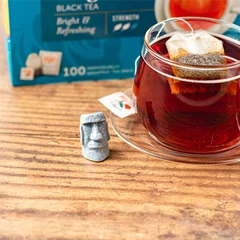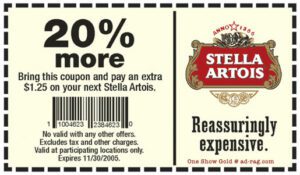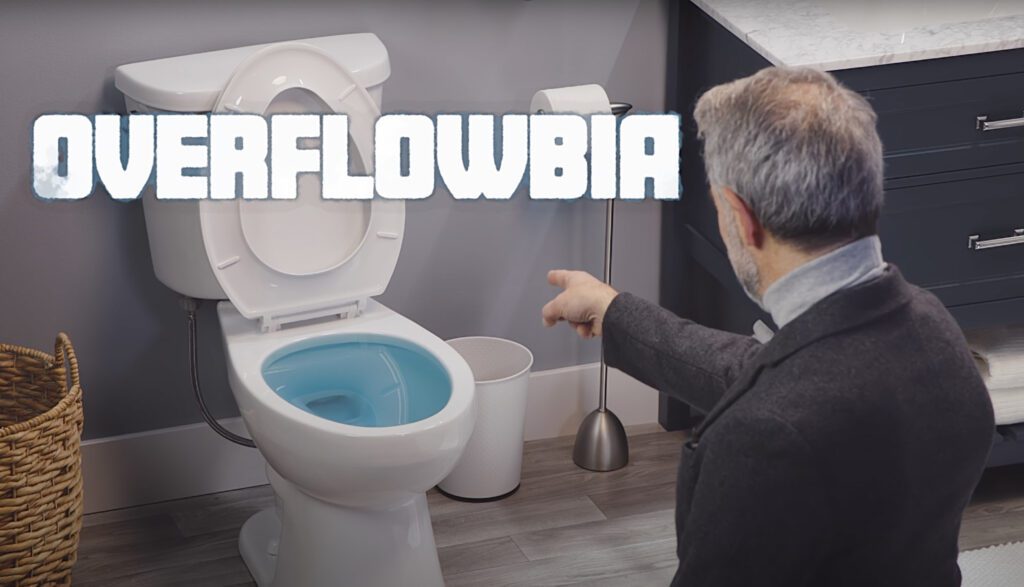How can you differentiate your brand and gain an unfair advantage over your competition? We’re so glad you asked.
New brands are born every second. (There’s another one!) In a constantly growing pool of competitors vying for your customers’ attention and loyalty, how can you make sure your brand floats to the top of their consideration set? The answer, my friend, is differentiation.
One quick note of caution: please don’t confuse differentiation with disruption. Anything unexpected can be disruptive – but that doesn’t mean it will differentiate your brand in a sustainable way that makes it become more well-known and well-loved. In fact, if something is inappropriately disruptive it may even harm your brand in the long run.

Brand differentiation comes from understanding what you A.R.E., an acronym that stands for Authentic, Relevant, and Easy-to-Understand. To meaningfully differentiate your brand, think about what is:
- Authentic (this differentiation is something authentic about you right now – not something you wish you were or think you could be)
- Relevant (to your audience)
- Easy-to-Understand (people can get it instantly – and remember it)
Determining how to differentiate your brand – figuring out who you A.R.E. on a fundamentally strategic level – can take time. (We know, we’re experts in Brand Elevation.) And it’s a worthwhile investment that helps all future marketing efforts rooted in this point of differentiation pay off.
BUT WHAT IF YOU DON’T HAVE TIME FOR THAT – OR WORSE, WHAT IF THERE REALLY IS NOTHING DIFFERENT ABOUT YOUR PRODUCT OR SERVICE? We’ve got you covered with these brand differentiation hacks!
Brand Differentiation Hack #1: Micro-weirding
You may have never heard of micro-weirding, but you’ve certainly experienced it. Micro-weirding is when a brand adds a little something extra (that’s the “micro” part) that really has nothing at all to do with the product or service they sell (and there’s the “weird” part). The sole purpose is to stand out in an unexpected way that grabs a buyer’s fancy and provides a benefit that none of the competitors offer, since it truly has nothing to do with what you do.

Micro-weirding can be literally anything at all.
Here’s my very favorite example: Red Rose Tea.
Way back when, in ’67, Red Rose Tea began including a small ceramic figurine inside each box of tea. What a smart way to differentiate from all the other tea brands on the shelf! People who previously would buy any black tea (most likely the one that was on sale) suddenly became Red Rose loyalists as they collected the different figurines. With those figurines, Red Rose expanded the brand experience beyond the cup, as people put the figurines on display in their home, played with them, and traded them. Whether intentional or incidental, this micro-weirding helped Red Rose create a community that was driven by their brand. Talk about brand differentiation!
Throughout the years, this micro-weirding has become part of the brand’s DNA. Red Rose Tea is still available with figurines, which they also sell separately in addition to their tea. (What’s that? Another stream of income? Yep.)
If a grocery store tea can micro-weird its way to brand differentiation success, so can you!
Note: Thanks to Dave Rendall, author of Pink Goldfish, for teaching me the term micro-weirding. Even the term is a memorable…
Brand Differentiation Hack #2: Weakness Amplification
Brands (and humans) naturally want others to think that they are great at everything. Yet as per the old adage “jack of all trades, master of none,” we all KNOW that a brand can’t be great at everything. And therein lies the next hack for differentiating your brand. While all your competitors are busy trying to hide their weaknesses, they’ll also be quick to point out yours.

Why not beat them to the punch – and endear yourself with potential customers in the process? In this age of transparency, customers will appreciate your honesty, especially if what you don’t offer really doesn’t matter to them. It’s time to consider amplifying your weaknesses as a brand differentiation strength.
Take Stella Artois. This Belgian lager brand can’t compete in the price category – and it will be the first one to tell you that, as per their tagline “Reassuringly Expensive.” How’s that for putting it out there? By addressing this potential obstacle to purchase, they are indicating that Stella is worth the price. It’s a memorable approach that cuts through the competitive clutter and appeals to the right audience, the ones who want to pay more for a better beer.
This brand differentiation hack humanizes brands, removes sales objections, draws in the right customers who want whatever it is you do offer, and – frankly – can be really fun. If you’re stuck, give it a try. I promise it will be one of the most fun brainstorms you’ve ever had.
Brand Differentiation Hack #3: Target Moving
It’s not you, it’s them. No really, sometimes to differentiate your brand you don’t need to change yourself at all – you need to change your target audience. This is especially true if you are currently vying for the same audience as many of your competitors. And it’s especially true if you don’t have the budgets your competitors do. Have no fear, another brand differentiation hack is here!

Traditionally, tea brands have a long history of marketing to women. Different types of tea target different types of women – from ages to lifestyle choices to taste preferences. The next time you see an ad for hot tea, ask yourself who the intended viewer was. I’ll bet I know what the answer will be. Unless, of course, the ad comes from Bigelow Tea.
Several years back, Bigelow Tea made a significant choice to go down a very differentiated path: they started advertising to people who watch sports. Sports like baseball. Sports where the ads were traditionally oriented toward male viewers. They hired sports figures like Joe Torre, the manager of the Yankees at the time to be in the ads. And those sports figures were also seen drinking Bigelow Tea in real life.
Well that got people’s attention! Bigelow became a top seller in the New York market. How’s that for a result? Like they say, if you can make it there you can make it anywhere. And like I say, if it worked for Bigelow, moving your target market can help differentiate your brand, too.
Which Brand Differentiation Hack Should You Try?
There’s no need to limit yourself – there are many paths to differentiate your brand! Grab some of the most creative minds you know and do 3 separate brainstorms to see what Micro-Weirding, Weakness Amplification, and Target Moving might look like. Think way, way, way outside the box. (As in, what box?)
There’s only one rule: make sure the differentiation is Authentic to the brand, Relevant to the audience, and Easy-to-Understand – in other words, it’s true to who you A.R.E. as a brand.
Don’t forget to bring the refreshments. (Is anyone else thirsty after all of those beverage brand differentiation examples?)




